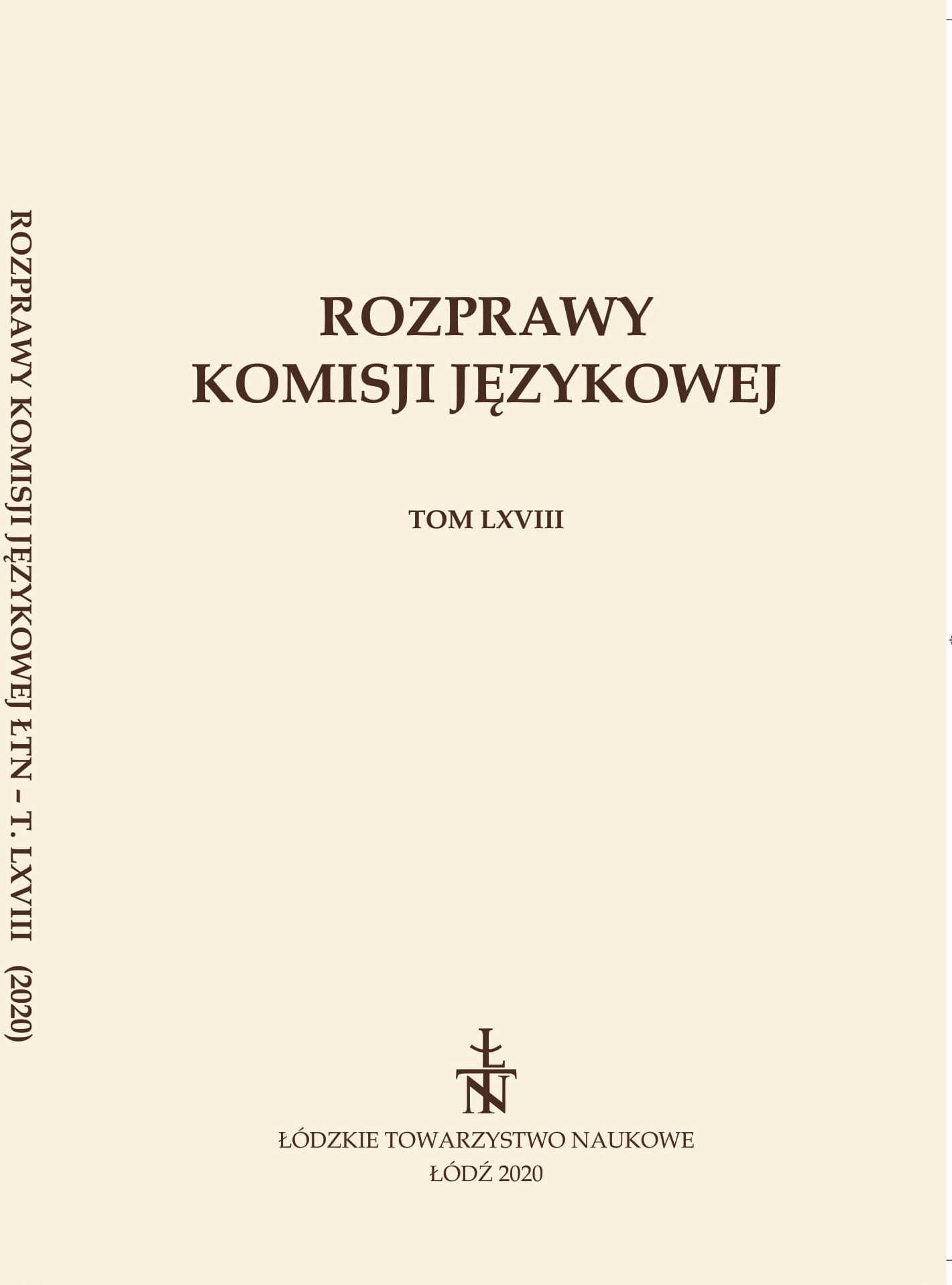Церковнослов’янізми із коренем -мук-/-муч- в староукраїнських пам’ятках XVI–XVII ст / Ecclesiastical Slavicism With the Root of -muk-/-much- in the Old Ukrainian Monuments of the 16th and 17th Centuries
DOI:
https://doi.org/10.26485/RKJ/2020/68/7Keywords:
historical and contemporary dictionaries, monuments of Ukrainian writing, semantics, church Slavonic wordsAbstract
The article presents research results of the ecclesiastical slavicisms with the root -muk-/-much-. The research is based on monuments of Ukrainian literature written during the 16th–17th centuries (card catalogues, court documents, wills, descriptions of castles, universals of the offices of hetmans, documents of church and school fraternities, chronicles, works of religious, polemical and fiction, memos of scientific and educational literature, liturgical literature, epistolary heritage, etc.) included in the source database Dictionary of the Ukrainian language of the XVI – the first half of the XVII century, edited by D. Hrynchyshyn and Chikalo M., and Historical Dictionary of the Ukrainian language, edited by E. Tymchenko. It was found that the dictionaries mentioned above list more than thirty words of different structure and phonetic-graphic variants of word forms with the root -muk-/-much-.
The study focused on the etymological analysis of the studied tokens, which was aimed to establish their semantic etymon, while it was noted that some Church Slavonicisms are traces to the Greek language.
The analysis also showed that the abstract Church Slavonic words with the root -muk-/-much-, attested in Ukrainian monuments of the 16th–17th centuries, did not undergo significant semantic changes in the history of Ukrainian vocabulary. On the other hand, some words have undergone a partial semantic modification, particularly those that have become a part of the idioms in the Ukrainian language of the 16th and 17th centuries, while others have become figurative.
It is established that the historical part of the analyzed lexemes is not the same. The vast majority of the studied Church Slavonicisms have survived to this day in the Ukrainian literary language, as well as in the colloquial language. Some of them function in Ukrainian liturgical practice.
References
Biłousenko Petro, 1993, Istorija sufiksalnoji systemy ukrajinsʹkoho imennyka (nazwy czołowiczoho rodu), Kyjiwsʹkyj derżawnyj pedahohicznyj instytut, Kyjiw.
Biłousenko Petro ta inszi, 2010, Narysy z istoriji ukrajinsʹkoho słowotworennia (imennykowi konfiksy), TOW „LIPS” ŁTD, Zaporiżżia–Krywyj Rih.
Dydyk-Meusz Hanna, 2018, Kombinatoryka w ukrainsʹkij mowi XVI–XVIII stolitʹ: teorija, praktyka, słownyk: monohrafija, Instytut ukrajinoznawstwa im. I. Krypjakewycza NAN Ukrajiny, Lwiw.
Krowycʹka Olha, 2005, Ukrajinsʹka łeksykohrafija: teorija i praktyka, Instytut ukrajinoznawstwa im. I. Krypjakewycza NAN Ukrajiny, Lwiw.
Myronczuk Oleksandr, 2014, Nazwy czyniw swiatosti w istoriji relihijnoho stylu ukrajinsʹkoji mowy: awtoref. dys. kand. fiłoł. nauk: 10.02.01 – ukrajinsʹka mowa, Instytut ukrajinsʹkoji mowy NAN Ukrajiny, Kyjiw.
Sztandenko Ulana, 2008, Widimennyj sufiksalnyj słowotwir dijesliw u staroukrainsʹkij mowi XIV–XVIII st., Instytut ukrainsʹkoji mowy NAN Ukrajiny, Kyjiw.
Wojtiw Hanna, 2015, Semantyczna istorija słowa „myr[ъ]” w ukrajinsʹkij mowi XVI – perszoji połowyny XVII st., w: Nowi doslidżennia pamjatok kozackoji doby w Ukrajini. Zbirnyk naukowych statej.
Pryswiaczujetʹsia 100-riczcziu wid dnia narodżennia I. K. Swiesznikowa, wyp. 24, Centr pamjatkoznawstwa NAN Ukrajiny i UTOPIK, Kyjiw, s. 412–415.






